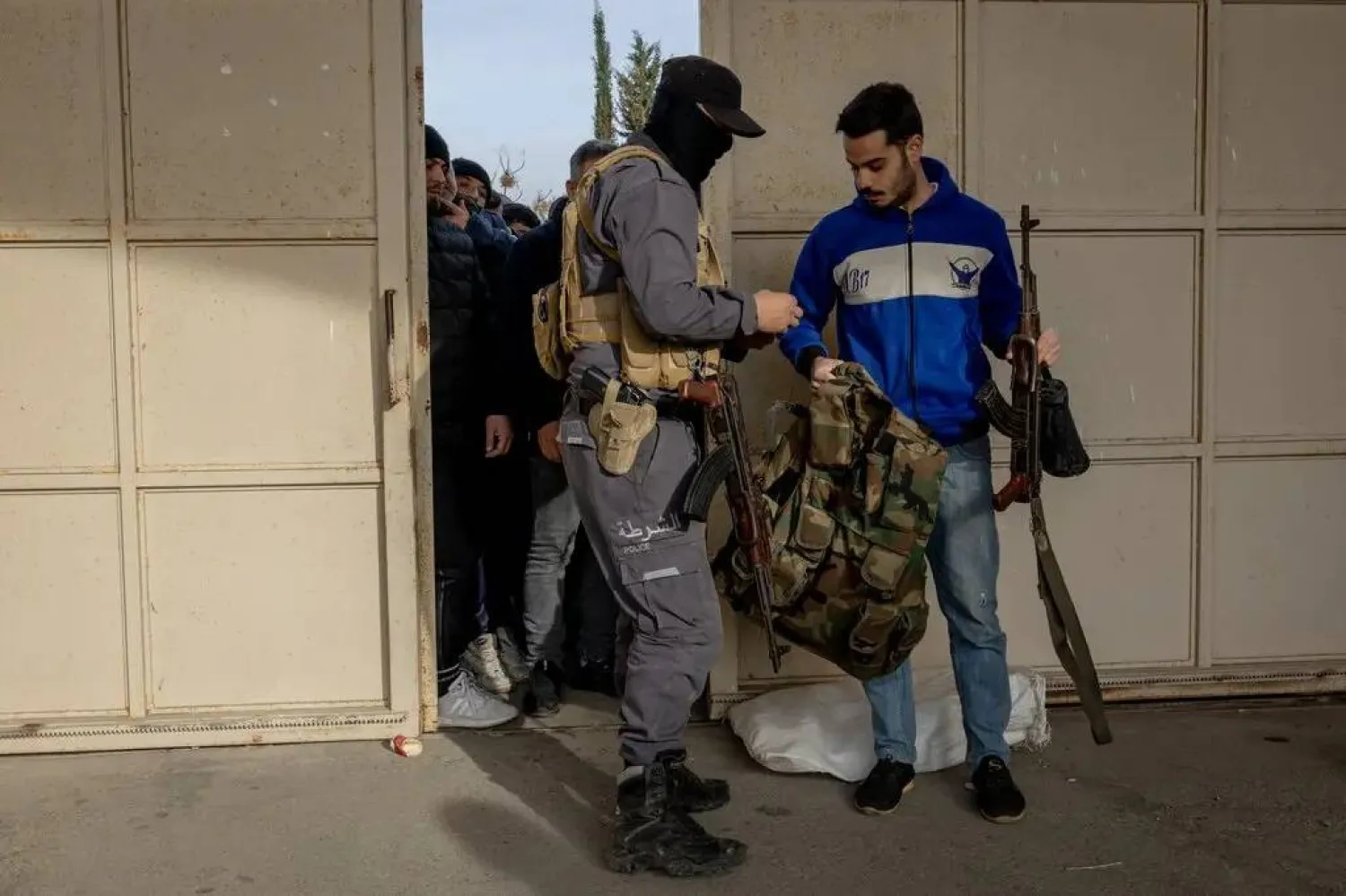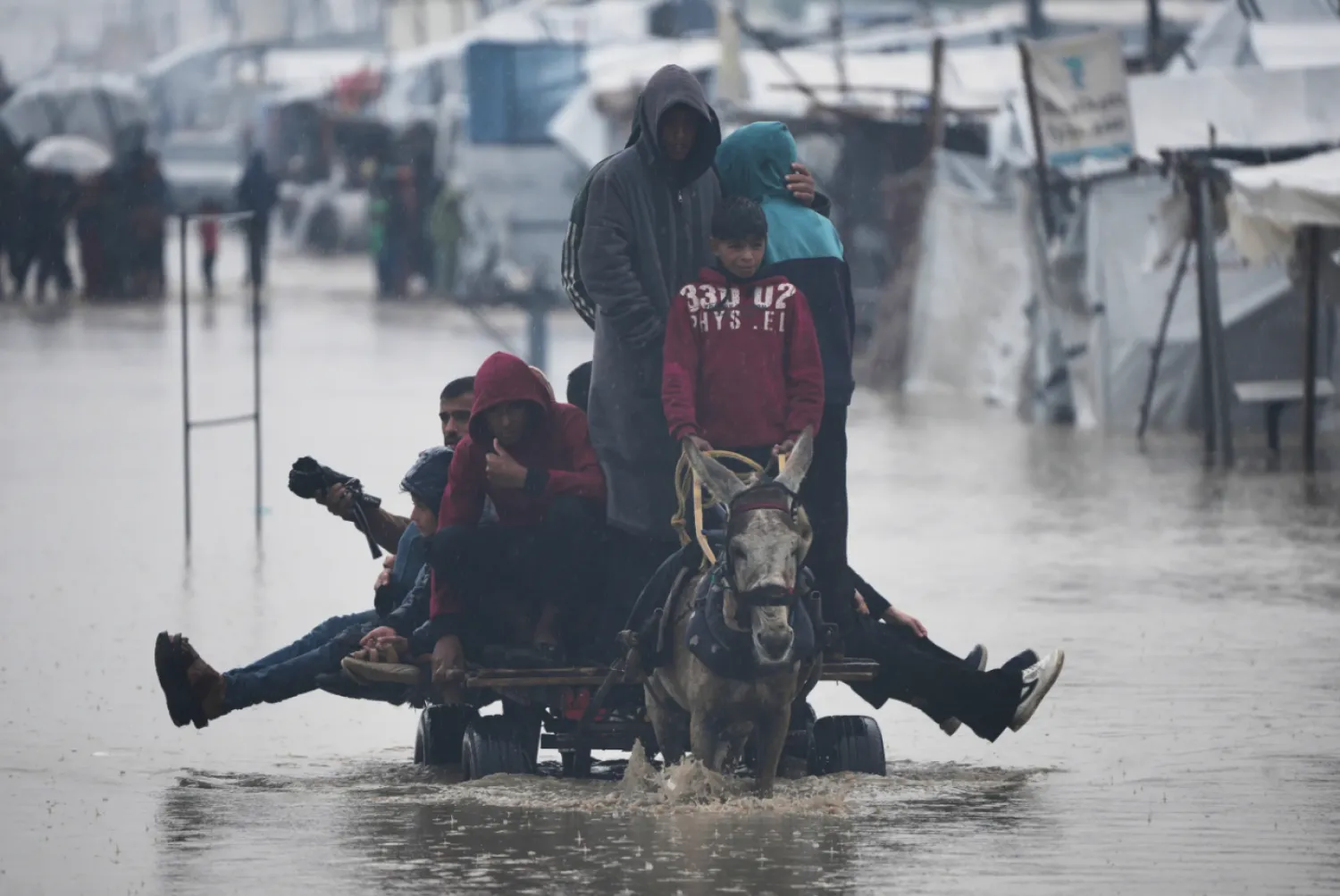Former Lebanese President Amine Gemayel said that the late Syrian President Hafez al-Assad viewed Lebanon the same way the late Iraqi President Saddam Hussein viewed Kuwait. He added that Assad “considered Lebanon a historic mistake that could be corrected by bringing it back into the Syrian fold.” He emphasized that Assad wanted “nothing more, nothing less than to annex Lebanon,” noting that he upheld his constitutional oath during 14 summit meetings with the Syrian president.
Gemayel made these comments in an interview with Asharq Al-Awsat, where he discussed Lebanon’s experience during the long “Assad era” and other key moments.
In the 1970s, Pierre Gemayel, leader of the Kataeb Party, received an invitation from Assad to visit Damascus. He brought along his sons Amine and Bashir. The Syrian president warmly welcomed them into his home, but the honeymoon did not last long.
Reminiscing stirred up painful memories for Gemayel, who carries two deep wounds: the assassination of his son, MP and Minister Pierre Gemayel, in 2006 amid a wave of killings that followed the assassination of former Prime Minister Rafik al-Hariri, and the assassination of his brother, President-elect Bashir Gemayel, in 1982. Amine Gemayel assumed the presidency that same year, following two political earthquakes: the Israeli invasion of Lebanon and his brother’s assassination.

Hafez al-Assad and the ‘Lebanese mistake’
Asked what Hafez al-Assad wanted from Lebanon, Gemayel said: “You’re asking a foregone question, as the French saying goes. He wanted to annex Lebanon—nothing more, nothing less. Syrian politicians, even before Assad, couldn’t accept Lebanon’s existence. They saw it as an artificial country that should be part of Syria. They believed Lebanon was wrongly separated due to the Sykes-Picot Agreement. Beirut’s port is closer to Damascus than Tartus, so they believed Lebanon was an inseparable part of Syria.”
“Assad also held this view. He couldn’t digest the idea of Lebanon as a stable, independent country. His ultimate goal was annexation. Every agreement or relationship Syria pursued was aimed at eventually achieving this annexation,” he revealed.
“Assad told me plainly, in a one-on-one meeting: ‘Don’t forget that Lebanon is part of Syria. We’re one country. Colonial powers divided us, and it’s in your interest as Lebanese to return to the Syrian fold. No matter how circumstances change, Lebanon must return to Syria.’”
“He was that blunt. He even tried to soften it by comparing it to European unity. ‘Europe united, why can’t we do the same?’ He argued that the countries had shared interests: political, security, economic. So why not unite?”
Asked whether Saddam’s invasion of Kuwait reminded him of Assad’s attempt to annex Lebanon, Gemayel said: “Yes. To Saddam, Kuwait was what Lebanon was to Hafez al-Assad.” He noted that Iraqi leaders claimed colonial powers had stolen Kuwait from Iraq—just as Syrian leaders believed colonialism had stolen Lebanon from Syria.
Still, Gemayel clarified: “Despite all this, I maintained a normal relationship with Assad. Even affection, you could say. We respected each other. He understood my position and would say, privately, that if he were in my place, he’d do the same. And I understood his views, though our ideologies were completely opposed.”

“Assad would get infuriated by my rejections at times. He thought Lebanon was ripe for the picking—and there I was, blocking him. But he respected me for it. He knew that, in my place, he might have acted the same way. Still, he believed it was in Syria’s interest to ‘unite’ with Lebanon.”
“The Syrian army was already in Lebanon and had co-opted many Lebanese leaders who were ‘pilgrimaging’ to Syria. Assad thought the moment was right. He also mobilized pro-Syrian Palestinian factions,” recalled Gemayel.
“I stood in the way of this dream, which led to fierce political clashes between us—an intellectual struggle, if you will, between his push for unity and my defense of Lebanese independence. We had mutual respect. I met Assad 14 times during my presidency.”
Telling Assad ‘no’ required extraordinary courage’
“I debated, resisted, and stood firm. Facing Assad—his weight, his stature in Syria and the Arab world was no easy task. I had no army, no stable institutions, and Lebanese political leaders were scattered. The situation in Lebanon was dire,” Gemayel told Asharq Al-Awsat.
“Eventually, even my own allies turned on me. Assad had even co-opted a faction of the Lebanese Forces. He thought I’d cave and sign the papers. But I didn’t. That moment was one of the hardest. Saying ‘no’ to Assad under those conditions required extraordinary courage.”
Asked whether the May 17 Lebanese-Israeli Agreement was the most difficult point in his relationship with Assad, Gemayel said: “No. The hardest point was the Tripartite Agreement between Amal, the Progressive Socialist Party, and the Lebanese Forces. With that agreement, Assad fully controlled the Lebanese scene—especially after winning over leaders like Elie Hobeika and Samir Geagea.”
“Assad believed Lebanon was in his grasp. Only I stood in the way. He didn’t care much about my position but needed my signature. As president, I had taken an oath to preserve the constitution and sovereignty.”
“Despite enormous internal and external pressure—even from within the Christian camp—I stood alone. But I was committed to the Lebanese cause. Ultimately, we won. The public, especially the Christian community, rallied around me. The other leaders who had sold out were exposed. That moment saved Lebanon’s sovereignty and its democratic system.”
Asked by Asharq Al-Awsat, if Assad resented him for sabotaging the Tripartite Agreement, Gemayel replied: “Assad thought he had Lebanon in the bag and was just waiting for congratulations. The day of the signing, King Hussein of Jordan was set to visit Syria. They delayed his visit to finalize the agreement. That’s how important it was to them.”

“Assad was frustrated, maybe even bitter. He couldn’t believe that I—stripped of power—dared to say no. But he respected me for it,” added Gemayel.
“After the deal collapsed, I was in Morocco. Syria’s ambassador, a close Alawite to Assad, visited me and conveyed Assad’s respect. It was a message to reopen communication. Assad may have been furious, but he still respected how I stood firm as a young leader facing such odds.”
The bomb on the presidential plane
Asked whether he feared assassination like Kamal Jumblatt, Gemayel replied: “All kinds of pressure were used to make me sign. One story Assad told me—casually—was about how Sadat informed him he was going to Jerusalem. Assad opposed it strongly. After Sadat left the room, Assad’s people asked if they should stop him, maybe even blow up his plane.”
“Assad said he thought about it, but his conscience stopped him. The way he told me the story, it felt like a warning. Like he wouldn’t make the same ‘mistake’ again,” said Gemayel.
“There were several attempts to assassinate me. The most serious one was when I was flying to Yemen. My plane had been rigged with a bomb. The pilot, a meticulous man named Makawiy, noticed a minor issue with the radio and refused to fly. They discovered a wire under the cockpit leading to a bomb.”
“Syrian intelligence was at the airport and immediately seized the bomb and equipment to block any investigation. Who else could rig a presidential plane under heavy guard? Clearly, only they had that kind of access.”

Syrian intelligence behind Bashir’s assassination
Asked whether he believed Syrian intelligence was behind his brother Bashir’s assassination, Gemayel said: “That’s a fact. The killer was from the Syrian Social Nationalist Party, which was under direct Syrian intelligence control under Assad Hardan. The bomb was planted in Bashir’s office by Habib Chartouni, who had access to the building.”
“After the Syrian army ousted Michel Aoun from the presidential palace under President Elias Hrawi, they sent one unit to the palace and another to Roumieh Prison to free Chartouni. He walked free and gave a speech thanking Syria. That says everything.”
“Chartouni was initially too afraid to detonate the bomb, but party leaders pressured him. The operation was directly linked to Syrian intelligence,” added Gemayel.
Final meeting with Assad
Gemayel recounted his last meeting with Assad, two days before the end of his term: “We were trying to reach a deal: electing Michel al-Daher as president in exchange for certain guarantees. While I was with Assad explaining the plan, he received a note about a meeting in Lebanon between Geagea and Army Commander Michel Aoun.”
“He saw it as a coup attempt and ended the meeting abruptly. I returned to Beirut, but we couldn’t resolve the situation. Despite this, Assad—though ill—insisted on accompanying me to the airport, saying: ‘We are brothers no matter what.’”









